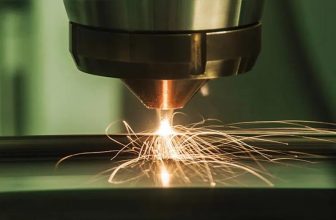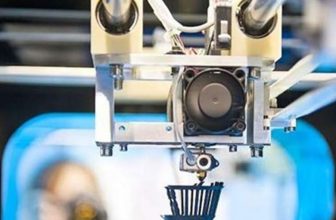
The first synthetic polymer was developed by John Wesley Hyatt(Wiki Links:https://en.wikipedia.org/wiki/John_Wesley_Hyatt) in 1869 as a substitute for ivory. We cannot imagine life without polymers at all. It is understood that in 2015, more than 320 million tons of polymers (excluding fibers) were produced globally, a large number of thermoplastics entered the automotive industry (weight reduction and higher fuel efficiency standards), and more than 70 million tons of thermoplastics were used in textiles each year. , Mainly clothing and carpets. But one of the most interesting thermoplastics is high-performance thermoplastics, which are specifically used for very demanding applications. Although they account for less than 1% of the total market share of all thermoplastics, they are becoming more and more due to their possibilities in industries requiring high heat resistance, chemical reactivity, mechanical strength, recyclable and lightweight materials. important.
What are the properties of thermoplastic materials?
Today, industrial 3D printing has used high-strength thermoplastics PEEK, PEKK and PEI for many engineering applications in difficult environments. When 3D printing is used in combination with thermoplastics, optimized, high-quality parts can be manufactured for practical use.
“Ultra-polymers are stable at high temperatures (over 300°C), are resistant to chemicals and radiation, are compatible with many reinforcing agents, are stronger than many metals, and have high mechanical properties, making them suitable for industrial applications in various industries. Very attractive, such as aerospace, oil and gas, nuclear energy, marine, biomedicine, tools and automotive industries.” said Avalos, one of AON3D’s research scientists.
After 1985, the material formulations often used in 3D printing are polymers. Both PEEK and PEKK are semi-crystalline (now there is an amorphous PEKK), while PEI is amorphous. According to Avalos, the glass transition temperature (Tg) determines the state of the polymer, that is, “the temperature at which the polymer changes from an amorphous state to a more flexible rubber state.” These “semi-crystalline polymers are also crystalline (for example, PEEK is extremely resistant compared to most other plastics, with a Tg of 143°C and a melting temperature of 343°C.)
“Thermoelasticity also means that some high-performance thermoplastics can resist thermal degradation and are compatible with ultra-high vacuum applications, which is necessary for many use cases in the aerospace industry and biomedical fields-which makes it a need for Ideal for parts that are sterilized at high temperatures.”
In addition, PEEK has excellent mechanical and chemical resistance, which is a feature of great interest to the automotive industry because of the material’s heat resistance, high strength and durability, can withstand the temperature under the hood, and can be more resistant than ever before. Realize functional prototype design at low cost.
Medical-grade and implantable biomaterials, such as PEEK, can also be used in neurological applications to help control epilepsy, Parkinson’s disease, brain trauma, and even spinal fusion devices. PEEK has the greatest clinical impact in the field of spinal implant design and is now widely accepted as a radioactive alternative to metal biomaterials in the spinal community. After confirming its biocompatibility twenty years ago, PAEK is increasingly used as a biomaterial for orthopedics, trauma and spinal implants.
Avalos explained that heat resistance is an important quality of thermoplastics, and the ability to withstand extreme temperature conditions is one of the factors that people consider when using it in the manufacturing process:
“When 3D printing, the crystallization rate is never constant, and is largely affected by the environment in which the molten polymer is extruded. Many temperatures in the printing environment affect the printing layer, such as chamber temperature, chamber convection And nozzle temperature, etc. Therefore, rapid temperature changes between the extruder and the environment may cause the overall crystallization rate to become lower.”
“PEKK looks a lot like PEEK and has similar crystallization behavior, but its Tg is slightly higher than 160°C, while PEEK is 143°C, pseudo-amorphous grade melting point is 305°C, semi-crystalline junction grade melting point is 332°C Unlike PEEK, PEKK has a slightly slower crystallization rate, which makes it easier to control and can lead to better layer welding.” Avolos claims.
However, many experts also believe that even the most modern version of PEKK is still more difficult to crystallize than PEEK, which may be the reason why PEEK is one of the most concerned thermoplastics in the printing market.
Amorphous, high-performance thermoplastic PEI also has strong resistance. Like most amorphous polymers, it has the characteristics of thermoforming ability, translucency, and easy bonding with adhesives or solvents. Because of its chemical resistance to many fluids, it is very popular in the aerospace and automotive industries. In addition, PEI is much cheaper than other high-performance thermoplastics and has good physical properties such as high heat resistance, solvent resistance and flame retardancy.
What challenges does 3D printing of thermoplastic materials face?
Avalos said that some of the challenges in 3D printing high-performance materials include warpage, shrinkage and deformation.
“Semi-crystalline polymers provide a unique challenge because crystallization causes further shrinkage, which creates internal stress, which in turn leads to deformation. The crystallization of the lower layer can change the displacement in the welding with the next layer. Thermoplastics usually reduce the volume. It is small and keeps cooling from the molten state to the solid state. The ambient temperature contained in the chamber and the bed has a great influence on the degree of shrinkage during the deposition of the first layer. The underlying deposition layer will also undergo the same cooling and shrinking process. Generate residual stress, which exists in the component and accumulates layer by layer.” He said, “High-strength materials like PEEK and PEI require an actively heated construction chamber, otherwise they will be affected by poor lamination and extremely low component strength. .”
Avalos claims that in order to avoid shrinkage, the material changes from a molten state to a solid state, and to reduce residual stress in the part, the temperature environment of the extruder, heating chamber, and bed is very important. Polymers are very popular now, but in the past, temperature was a big obstacle, so he suggested “printing amorphous polymers at the highest possible room temperature and bed room temperature, keeping the bed temperature as close to Tg as possible to maintain the overall The temperature of the environment is the same.” At present, some 3D printers have been designed like this.
He also suggested that “understanding the material used to build the board and its interaction with the printing material” is the key, because all the first layer adhesion will cause warpage, and too high bed temperature will cause the first layer to stick when it is implanted. If the attachment is too strong, it is difficult to remove the parts at the end, which may damage the bed and parts; but if the bed is too cold, the first layer may not be firmly attached, and the part may warp during the printing process.
“For amorphous and semi-crystalline materials, the layer welding environment must be carefully controlled to ensure good part strength.”
The performance of thermoplastic products in terms of weight ratio and stiffness ratio is even better than metal in some cases, but thermoplastics are not cost-effective in mass production, and they cannot print very large parts.
What functions should a thermoplastic 3D printer have?
“When selecting industrial 3D printers for PEEK, PEKK, and PEI, there are many key components to consider, especially the elements involved in managing the critical ambient temperature inside the printer: hot ends, build plates, and chambers. For high-performance polymerization In the case of semi-crystalline polymers, you need a hot end that can reach and exceed the melting temperature of the material, or much higher than the glass transition temperature of amorphous polymers.”
She advises professionals to look for printers that can provide a cooling system, such as a liquid cooling circuit connected to the hot end, which can extend the service life of the components and accurately control the filament softening process at the hot end.
In addition, she claims that the printer should have a closed chamber and a heatable build plate that can reach the right temperature so that the molten polymer can deeply grasp the cavity on the surface and generate between the two materials Good attraction-especially 3D printed PEEK-because the heat flow from the surface of the build plate helps to accelerate the crystallization process. She also recommends using a closed room with heating in the active room, which means that there is a mechanism to circulate the air in the room to ensure a constant temperature condition during the entire printing process.
“Some 3D printers provide chamber heating that lacks active ingredients, resulting in uneven heat distribution, which may bring unnecessary challenges to achieving high-quality printing.”
Buyers should explore 3D slicing software for 3D printing and any software used to control the machine, regardless of whether the supplier includes machine-specific build profiles for key materials, whether the system is an open or closed material platform, and if professionals can Remotely control the 3D printer from the computer.
In the past few years, many companies have begun to develop FDM (Fused Deposition Modeling) machines for 3D printing using thermoplastics. These printers are becoming more and more common in the professional industry.





